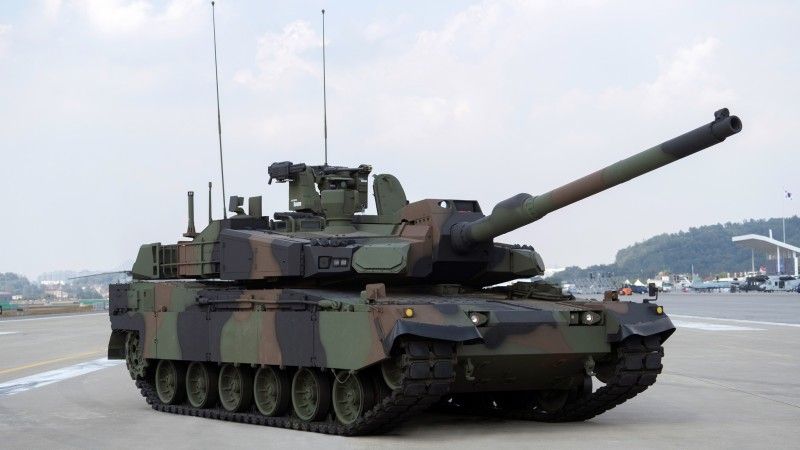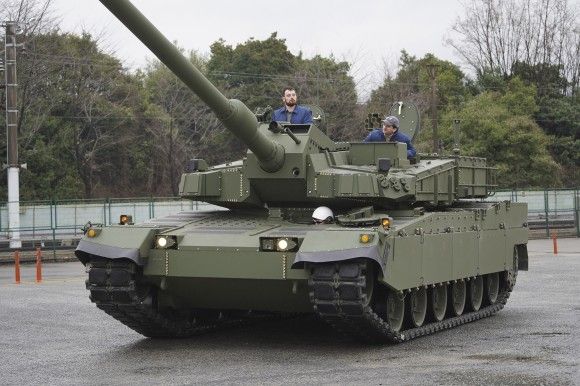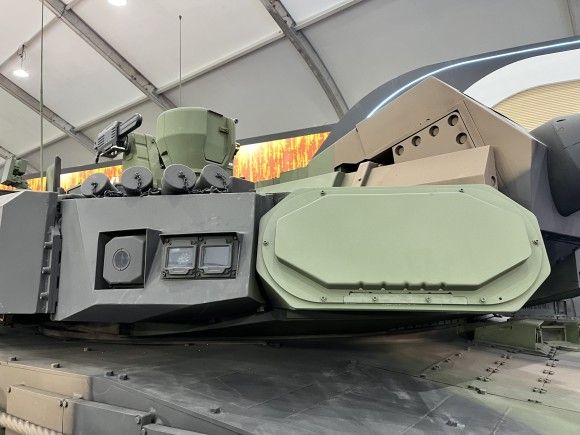Industry
New Developments in the K2PL Programme. Polish MBT Taking Shape

Photo. Hyundai Rotem
The deadline for signing the performance contract regarding 820 K2PL main battle tanks for the Polish Armed Forces remains unknown. To find out more about the programme, the Defence24.pl editing team embarked on a journey to the Republic of Korea. There we gathered knowledge at the Hyundai Rotem company, and we also paid a visit to the K2 Black Panther main battle tanks manufacturing facility in Changwon.
Before I move on to the new information on the K2PL MBT, let me outline a broader background for this programme. According to the information we received from the Hyundai Rotem, the Polish Armed Forces would not be the sole beneficiary of the development of the Polish K2 variant. So far, the Daehanminguk Yukgun (Republic of Korea Army) procured the baseline K2 Black Panther variant, across three production lots. Some of the vehicles destined for the ROK Army, coming from the last lot, were redirected to Poland. The finalization of the last, Korean contract was postponed. It is not a rare scenario. A similar approach was adopted by Poland when transferring a large number of Krab howitzers to the Armed Forces of Ukraine - defending themselves from the barbaric aggression.
Not Just for Poland
The procurement of the fourth lot of 150 MBTs for the ROK Army is planned to happen between 2026 and 2028. Seoul allocated KRW 1.94 trillion to this agreement (ca. 5.78 billion zlotys). The vehicles received the working name K2 PIP (Product Improvement Programme), and they are expected to share a lot of DNA with K2PL. Ultimately, the K2 PIP would become the baseline variant of the Black Panther MBT in the Republic of Korea. The legacy platforms from lots 1-3 differ from the objective configuration within the scope of their power packs for instance, however, they are scheduled to receive upgrades during the periodic overhauls, so that the whole fleet becomes homogenized. The Polish and the Korean MBTs would not be identical, but they would be close enough to make it possible for both the Changwon Hyundai Rotem plant and WZM Poznan, to cross-manufacture numerous components as needed by the Armed Forces of both nations and export customers alike.
The data received by the Hyundai Rotem design bureau, following the Norwegian comparative test programme also involving the Leopard 2A7 and the desert test programme of the K2 in Oman, remains precious. Based on this data, the K2NO (Norwegian) and K2ME (Middle East) concepts were born. Some of the solutions developed within the aforementioned programmes were implemented in the K2EX demonstrator vehicle, unveiled during last year’s edition of the ADEX event in Seoul. As time goes by, the solutions developed for the concept tanks will become a part of the series of manufactured vehicles, such as K2PL, K2PIP, or the hypothetical K2A1 MBT. The catalogue of mods developed at HRC is growing - and this is a relevant advantage for potential export customers.
Hyundai Rotem is also receiving feedback from the Polish users of the Black Panther MBT. And the feedback is mostly positive, which is somehow aligned with the conversations I had with the Polish tank crews during various media events. I am aware of the fact that it remains difficult, in such conditions, to obtain an exhaustive, non-biased user review in such circumstances. Both the Polish tank crews, as well as their Korean counterparts, praise the MBT for its mobility, user comfort, accuracy, and operational headroom, which also translates into high levels of combat readiness.
Good reviews by the 20th Mechanized Brigade, the first unit to operate the Polish K2 Black Panthers, shall not be a surprise then. The Bartoszyce-based element was used to operate the antique T-72 in the past. Nonetheless, the unofficial reports coming from the ongoing Dragon-24 exercise in Poland suggest that the allies, with the very modern inventory at hand, also praise the new main battle tanks that the Polish Army operates. The deficiencies, such as the ergonomically imperfect driver’s hatch and the insufficient protection levels offered by the side armour are also taken into account, within the context of the K2PL programme.
Long List of Options
Even though the detailed scope of changes expected in the case of the K2PL MBT, when placed against the background of its Korean prerequisite, has not been finalized, the Hyundai Rotem representatives were able to define the list of systems that will, for sure, become a part of the Polish platform. These include RCWS, hard-kill active vehicle protection system, and counter-UAS jammer. It was also confirmed to us what we have known for quite some time - according to the Polish request, the K2PL would be based on the original hull and turret of the current K2 MBT, not the extended variant with seven pairs of road wheels, showcased during MSPO 2022. This means that the hull munitions storage would not be separated from the crew and that the driver’s station would not be shifted towards the central, longitudinal axis of the vehicle. Even though the implementation of those solutions is desirable from the usability and crew-safety standpoint, the changes would force the designers to modify the hull quite extensively. This would probably result in the development of an entirely new K2 model, designated K2A1. However, this does not mean that the topic of such design is completely abandoned. Hyundai Rotem is open to modifying the base platform accordingly when delivering further K2PL production lots.

Photo. Hyundai Rotem
No details on the configuration of the RCWS have been disclosed. We do not know whether the RCWS would be delivered by the Polish or the Korean defence industry. If the Polish Ministry of Defence decides to procure original machine guns for the MBTs, the vehicles will be fitted with the .50-cal. SNT Motiv (former Daewoo Precision Industries) K6 machine gun - a Korean derivative of Browning M2. Alternatively, the ZM Tarnów WKM-B (.50-cal. as well) could be used here. Whatever the selection is, the machine gun will need to withstand all the challenges tied to crossing the water obstacles. One of the key advantages of the K2 MBT is the fact that all examples receive a factory set of equipment for deep wading. Thanks to the above, after 20-30 minutes of setup, the Black Panther can cross water obstacles that are up to 4.1 meters deep.
Hard-kill APS is another interesting issue here. Many signs suggest that neither the Israeli Rafael Advanced Defense Systems Trophy HV nor the Korean Gukbang Gwahak Yeonguso, (Agency for Defense Development, ADD)/Samsung Thales (Hanwha Aerospace) KAPS (Korean Active Protection System) would be used here. The R&D of the latter was finalized in 2011, with the first field tests happening a year after that. It was not implemented due to the expected compatibility problems with the existing MSSG (Multispectral Screening Smoke Grenade) soft-kill solutions using multispectral smoke grenades provided by Samyang Chemical, coupled with SNT Dynamics launchers. The risk of soldiers accompanying the tanks being injured was also raised.

Photo. Paweł Kupisz/Defence24.pl
There is an option, however, of fitting the K2PL with a new KAPS-2 system. That system is co-developed by HRC and Rafael. No technical details were unveiled to us. It was just emphasized that the system is to be optimized for K2 dimensions- and also weight-wise, and also within the scope of its power consumption. It would also be based on a system that is already in service and certified, to minimize the risk of potential failure. The author would like to make a hypothesis that we may be speaking of a Trophy VPS derivative. The said solution is expected to be integrated onto the Challenger 3 MBT for instance. Considering the fact that Trophy is a system that underwent in-depth tests (not just in Israel), and has been combat-proven, the aforesaid proposal seems to be entirely rational. However, as usual, the devil is in the details, such as the cost, the delivery time, and the formal matters.
Korean Engine
The power pack is not expected to undergo any changes. K2 operated by the Polish Armed Forces utilize the HD Hyundai Infracore DV27K engine, coupled with the German Renk HSWL 295 TM transmission unit. Even though the said configuration was selected for K2PL, it is also possible to use the Korean SNT Dynamics EST15K gearbox. I had the pleasure of getting acquainted with that design during last year’s edition of the MSPO event. Up until recently, the EST15K was still suffering from infancy issues. The manufacturer claims however that these are no longer a problem, while a powerpack made in Korea in its entirety is expected to be integrated on the Turkish Altay MBT, waiting for its final BMC Power engine and transmission.
If Poland requests a new transmission for K2PL, Warsaw would need to wait until the end of this year. Until then, the EST15K is to undergo high load testing on an engine test bench, as per NATO standards, along with pre-run tests in an actual MBT. Then it would be approved for service in the ROK Army, just to become a part of the K2 PIP later on. By the way, the HD Hyundai Infracore engineers claim that the DV27K engine can be tuned to produce up to 1700 HP. This is a good sign for the K2PL’s upgrade headroom.
The author did not get an answer to a question regarding the K2 hull’s payload design limits. The unofficial information obtained from sources outside HRC suggests that 62.5 or even up to 65 tonnes is a possible figure. The Baseline K2 configuration offered to Poland weighs 57 tonnes. It may be assumed that alongside the equipment listed above, the final configuration would also include extra side armour on the turret and the hull (the HRC representatives stress that everything depends on the will of the Polish party), which would bring the total weight of the vehicle above 60 tonnes. Within the context of the Ukrainian experience, a certain load margin would be relevant for extra armour on the top of the turret, along with extra ERA modules.
To increase the maximum vehicle weight in the K2PL MBT (and in the future Korean variant), the tank will also be fitted with reinforced hydropneumatic suspension. Modification of the semi-active control system (and replacement with a full auto equivalent) is not expected - the said system currently allows the user to adjust the clearance and inclination of the vehicle when at a halt. The solution as such is however prepared for the Hyundai Rotem’s future MBT concept, under the working name K3. HRC claims that benefits stemming from such a solution in K2 would be limited. The K2 offers perfect handling already (as experienced by the author in the flesh), hence one should not expect any in-depth changes in this area.
Common Munitions
Subtle modifications of the main gun will also be implemented. The Polish Armed Forces will be certainly driven to unify the munitions stockpile for its Leopard 2, M1 Abrams, and K2 Black Panther main battle tanks. It remains especially relevant to make the K2 capable of using the multi-purpose HE rounds with programmable fuses - such as the German DM11, Israeli M339, or US-made XM1147 AMP. For that reason it is beyond doubt - the Polish negotiators will for sure raise the issue of the munitions programming unit for K2PL.
The Korean top-attack KSTAM-II (Korean Smart Top-Attack Munition) munitions designed for indirect fire, and working similarly to smart artillery rounds, like German SMArt-155, or the French-Swedish BONUS, have not yet been implemented domestically, or even offered to potential export customers. Nonetheless, given the lessons learned from the Russo-Ukrainian war, it seems justified to consider whether indirect, precise fire capability should be given to K2PL. The baseline K2 is better suited to do this than any other MBT in the world, thanks to the vertical travel of the gun - up to 24 degrees up, compared to Abrams’s and Leopard’s 20 degrees. The actual elevation range is even greater, thanks to the K2’s active suspension system.
We know, for now, that the Hyundai WIA CN08 gun can fire the K279 APFSDS-T rounds with a tungsten penetrator. The latest variant of these munitions produces a maximum chamber pressure of 690 MPa. 745 MPa is the CN08’s design limit, which means that there is sufficient headroom available, to fire modern munitions such as the US-made M829A4, German DM73, or the future Northrop Grumman KET/AKET rounds. Hyundai Rotem expressed full openness towards certifying new rounds in the K2 main battle tanks. This is not surprising, as the modern, lethal Poongsan Corporation K279 round was not cleared for export, while the Korean industry does not offer any multi-purpose programmable rounds.
Unfortunately, I have not had enough time to mention the coaxial machine gun issue. Replacement of the Korean M60 derivative is justified here, provided that the Polish industry can deliver a valuable replacement, such as the ZM-Tarnów’s UKM-2000C with left-side feed.
Project in Numbers
It shall also be mentioned that once the framework agreement is turned into a performance contract, the Polish industrial entities (WZM, HSW, WSK „PZL-Kalisz”, and others), would receive several relevant competencies from the Koreans. Aside from the hull and turret shells, Polish manufacturing would also include the main gun, autoloader unit, and suspension modules. As time goes by, the Polish share would also be growing. The last vehicles that would be leaving the WZM facility would receive most of the polonization.
WZM is getting ready to launch the manufacturing now. However, the exact timeline will only be unveiled once the performance deal is signed. A similar scenario would apply to the establishment of a K2 manufacturing facility in Poland which would deliver these main battle tanks to the European customer base, should Poland make good use of this opportunity. As key technologies and know-how are transferred, the Polish industry will also be able to implement some modifications in the K2PL design.

Photo. st. kpr. Piotr Szafarski / 16 Dywizja Zmechanizowana
Specialist vehicles based on K2, supporting the main battle tanks on the battlefield, are as important as the main battle tanks themselves. Hyundai Rotem is currently engaged in design works regarding three K2-derived support vehicles: an Armoured Recovery Vehicle, an Armoured Engineering Vehicle, and also an Armoured Vehicle Launched Bridge. More information would probably be available, within that scope, when relevant contracts are signed by and between Poland and Korea. It is plausible that the vehicles would be somewhat reminiscent of scale models showcased by Hyundai Rotem at MSPO last year.
Deloitte’s analysis ordered by HRC suggests that if the K2PL programme is fully implemented (with the Polish Armed Forces receiving 1,000 MBTs, and with 500 of these manufactured in Poland), and if an unspecified number of support vehicles is delivered, in a longer run the Polish defence industry would make a profit of USD 28 bn. The remaining sectors of the economy may receive another 20 billion. I am not in a position to make it possible to assess how realistic the aforesaid numbers are.
From the author’s point of view, jobs created in an important industrial sector would be the main economic benefit here. Deloitte’s analysts estimate that 34 thousand specialist jobs would be created in Poland. As the competitiveness of the European economies is on the decline, the said numbers are nothing short of impressive. 1,100 businesses and 40 thousand employees are involved in K2 manufacturing in South Korea alone. It is not surprising then, that the Hyundai Rotem’s narrative emphasizes the aforesaid benefits.
One should also mention the long-term stability guaranteed for the PGZ Group facilities - where the LCC associated with the Polish K2s would be placed.
The Clock is Still Ticking
Will the government decide to finalize the contract with Hyundai Rotem with a happy ending? The process of decommissioning the Soviet-made main battle tanks in the Polish Armed Forces has been accelerated after February 2022. Leopard 2 MBTs come next - these days they are undergoing in-depth overhauls, but it is dubious whether they will remain in active service for more than a decade.
Should the talks with Hyundai Rotem fail, could General Dynamics Land Systems push its agenda, with more Abrams MBTs? Or could a return of the Leopard 2 be expected, with its A8 variant? Whatever happens next, there is no doubt: there are some serious decisions ahead of the Polish Ministry of Defence and the Armed Forces, and those decisions will have relevant, long-term consequences. These would influence the security, and the development prospects faced by the defence industry and the Polish economy.

Photo. Damian Ratka/Defence24
It seems unlikely that the know-how lost by the Polish industry in the realm of heavy armour is re-obtainable without external help, from the PGZ Group. Manufacturing of the modern main battle tanks, whatever their roots are, or creating maintenance and overhaul facilities, as well as domestic R&D regarding tank systems, weapons, and components are all future investments for the Polish armoured units.
We will be sharing more information from ROK via Defence24.pl - regarding the K1 MBT upgrade, and the new generation K3 platform.
